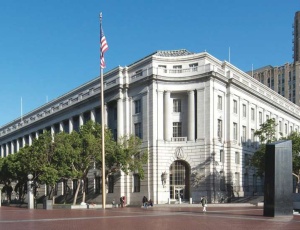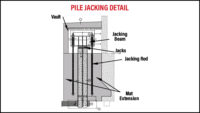HKS Inc., in partnership with Architectural Resources Group, won a $7.9 million design contract from the U.S. General Services Administration for the renovation/green upgrade of the historic 50 United Nations Plaza Federal Building in San Francisco.

The contract is funded by the American Recovery and Reinvestment Act. The GSA has allocated $121 million in ARRA funding for design, renovation and seismic upgrades to the 350,000-sq-ft, Beaux Arts style building.
The project will be completed in phases, starting with this design contract, the GSA says.
“Through a comprehensive, state-of-the art upgrade to the 50 United Nations Plaza Federal Building’s energy systems, we will help preserve this historic landmark for generations to come, while saving taxpayer dollars
through the building’s increased energy efficiency,” says GSA Acting Regional Administrator Jeffrey Neely. “By using these green technologies, this project will create jobs in both traditional construction sectors and
emerging green industries.”
The HKS/ARG team includes 18 additional local consulting engineers and building specialists.Design work will begin this month and is expected to be completed by September 2010.
The regional office of the GSA will take over the UN Plaza building, which was built between 1934 and 1936.
The seven-story steel frame and masonry Neo-Classical style building will get new windows, HVAC system, plumbing and electrical systems and life safety systems.
The building will be altered to meet American isabilities
Act requirements and the building’s hazardous
materials will be abated.
The building and its environs have a long history in the city. In 1906, after an earthquake decimated San Francisco and destroyed more than 28,000 buildings, the city rebuilt and adopted a plan for a civic center, first developed in 1899 by English architect B.J.S. Cahill, to consolidate government buildings in a central location. The last building
completed for the San Francisco Civic Center, the federal building was a critical component of the seven-building complex that included government buildings, a library, and an opera house. The civic center design incorporates
City Beautiful planning, a concept that relies on Beaux Arts design principles and classically inspired, monumental architecture. San Francisco’s Civic Center is one of the nation’s most successful examples of the City Beautiful
movement.
In 1927, the government allocated $2.5 million for the federal building’s design and construction, although final costs reached a total of $3 million. San Francisco city offi - cials donated a site in 1930. Architect Arthur Brown, Jr. designed the building. Brown is a San Francisco institution, having also designed the Opera House and Veterans Building
and, with his partner, John Bakewell, Jr. designed City Hall, a 1915 Beaux Arts architectural masterpiece.
In 1975, construction started on United Nations Plaza, designed by noted landscape architect Lawrence Halprin and located next to the federal building. The one-acre pedestrian area was named to honor the establishment of the U.N., which occurred in the Veterans Building on June 26, 1945.
The federal building was designated a National Historic Landmark in 1987 by the Secretary of the Interior. It was vacated in 2007 after a new federal building was constructed on Mission and Seventh streets.


Post a comment to this article
Report Abusive Comment